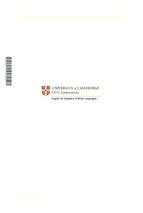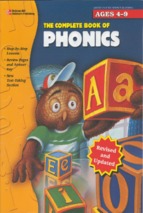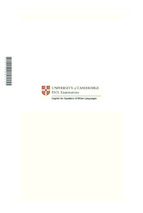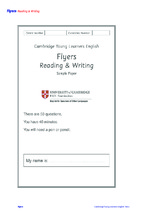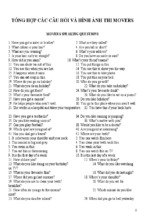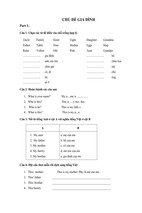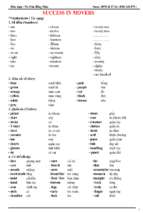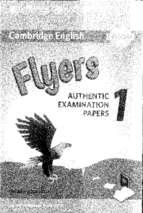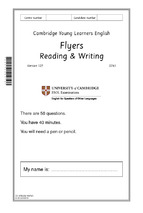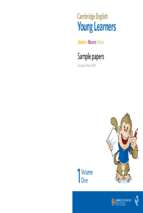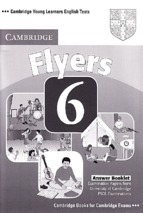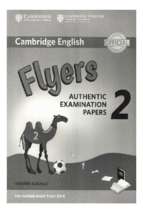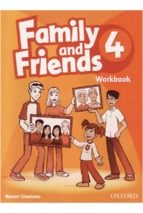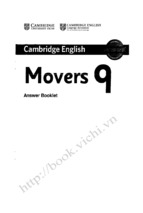A New Angle
on Trains and
Train Stations
DIGITAL FINAL PROOF
ca62xs_lay_061207ad_am.indd 4
1/9/07 9:09:15 AM
DIGITAL FINAL PROOF
Math Concept Reader
A New Angle
on Trains and
Train Stations
by Sarah Mastrianni
Copyright © Gareth Stevens, Inc. All rights reserved.
Developed for Harcourt, Inc., by Gareth Stevens, Inc. This edition published by Harcourt,
Inc., by agreement with Gareth Stevens, Inc. No part of this publication may be reproduced
or transmitted in any form or by any means, electronic or mechanical, including photocopy,
recording, or any information storage and retrieval system,
without permission in writing from the copyright holder.
Requests for permission to make copies of any part of the work should be addressed to
Permissions Department, Gareth Stevens, Inc., 330 West Olive Street, Suite 100, Milwaukee,
Wisconsin 53212. Fax: 414-332-3567.
HARCOURT and the Harcourt Logo are trademarks of Harcourt, Inc., registered in the
United States of America and/or other jurisdictions.
Printed in the United States of America
ISBN 13: 978-0-15-360193-4
ISBN 10: 0-15-360193-0
1 2 3 4 5 6 7 8 9 10 179 16 15 14 13 12 11 10 09 08 07
ca47xs_lay_070105ad_sb.indd 1
1/6/07 9:17:46 AM
DIGITAL FINAL PROOF
CHAPTER 1:
Angles, Angles
Everywhere
Before there were cars, buses, and airplanes, people
traveled long distances by train. Powered by steam,
diesel fuel, or electricity, trains have carried passengers
and freight from one place to another for more than
100 years.
Many people have observed these connected cars
pulled by engines along rails on tracks. The train
station itself, however, may not be a common sight to
most people. Train stations, also called railway stations,
are large, small, and nearly every other size imaginable.
No matter the size, railway stations are usually bustling
with people and activity.
�
ca47xs_lay_070105ad_sb.indd 2
1/6/07 9:17:47 AM
DIGITAL FINAL PROOF
A train station is one place to see geometric figures.
Train stations are central to train travel. They provide
a stop for passengers as well as freight. Each station posts
information on the trains that run through the station
and the times the trains stop. This information is called
a schedule, and schedules are available on paper, on the
Internet, and on monitors and boards at the stations.
Train tracks run north, south, east, west, and all
directions in between carrying trains to their scheduled
stops at numerous stations. The tracks run between
towns, cities, and states, and across the country. While
most trains carry freight and passengers, they also carry
geometric figures!
�
ca47xs_lay_070105ad_sb.indd 3
1/6/07 9:17:50 AM
DIGITAL FINAL PROOF
This is Union Station in Kansas City, Missouri.
Geometry is a branch of mathematics that deals
with geometric figures. While you can certainly study
geometry in math class, you can also study geometry in a
train station. Trains and train stations abound with lines
and angles. They are great places to find plane figures. A
plane figure is a figure that lies in one plane. Rectangles
and triangles are two examples of plane figures.
Nearly everything you see in and around a train and its
station contains geometric figures. In fact, many stations
have magnificent architecture with intricate details and
designs. The designs in the architecture often create or
contain figures. Take a look at the photo on this page for
example. The roof and windows of this train station create
varied geometric figures. Can you name the figures the roof
and windows look like? What other examples of geometric
figures do you notice in the photo?
�
ca47xs_lay_070105ad_sb.indd 4
1/6/07 9:17:58 AM
DIGITAL FINAL PROOF
Angles are just one type of geometric figure in a train station.
Angles are made up of a point and two rays that extend from the
point. A ray may look like a line, but lines continue forever from
both ends. A ray is a part of a line that begins at one endpoint and
extends forever in only one direction. Angles are measured in
degrees.You measure the space, or arc, between the two rays to
determine the number of degrees in an angle. Examine the angles on
the large clock at Grand Central Terminal in New York City. With
each tick-tock of the clock, the hands form new angles. At 3:00 for
example, the clock hands make an L with 90 degrees. At 1:00, the
hands form a lesser angle; at 5:00 the hands form a greater angle.
The angle formed at 3:00 on the clock is a right angle. The angle
at 1:00 is as an acute angle, and acute angles have less than 90 degrees.
The angle formed at 5:00 is an obtuse angle, and obtuse angles have
more than 90 degrees, but fewer degrees than a straight line.
The hands of the clock at Grand Central Terminal in New York
City form different angles depending on the time shown.
�
ca47xs_lay_070105ad_sb.indd 5
1/6/07 9:18:07 AM
DIGITAL FINAL PROOF
This is the inside of Grand Central Terminal in New York City.
There are many angles to see inside the building.
The clock at Grand Central Terminal is not the only
place to see right, acute, and obtuse angles. The building
itself is home to countless angles. Notice that the
rectangular window frames in this photo form right angles
at each corner. Even the smaller glass panes within the
larger frames form right angles.
The counters and schedule boards surrounding the
ticket windows form angles. In fact, if you look closely,
you’ll see angles on the information booth at the center
of the image. Look closer still, and you’ll notice the angles
people and their shadows make on the terminal floor. A
terminal is another type of station: it’s called a terminal
because train routes end, or terminate, there.
�
ca47xs_lay_070105ad_sb.indd 6
1/6/07 9:18:11 AM
DIGITAL FINAL PROOF
Trains on the track are also a great place to find angles. In
this photo, the train windows form angles. Even the painted
design on the engine and train cars forms angles. Can you
locate any right angles in the photo? Can you spot any acute
or obtuse angles? How do you know they are acute or obtuse
angles? Be sure to look at the train and the tracks to find angles.
You might be asking yourself by now, “What other types of
geometric figures can I find on a train or in a station?” One
answer to that question is lines—all kinds of lines. We said
earlier that lines are straight and continue endlessly in both
directions. In photographs and artwork, there are many designs
that look like lines. It is true that they are straight marks similar
to lines, but they end at some point. In this book, we’ll call these
line-like marks “designs that look like lines.” Look for designs
that look like lines in the train photo.
Look for acute, obtuse, and right angles on the train and
the tracks.
�
ca47xs_lay_070105ad_sb.indd 7
1/6/07 9:18:15 AM
DIGITAL FINAL PROOF
CHAPTER 2:
Lines — They
Just Keep Going
Some lines are described as parallel. Parallel lines are
lines in the same plane that never meet. They remain
exactly the same distance apart. When we talk about
tracks in this book, we mean two metal rails and the
wooden ties that lie perpendicular to the rails. Sometimes
the rectangular ties under the rails are called “sleepers.”
Engines pull cars along the track by riding the rails.
Trains can run on parallel tracks at the same time
without crossing paths.
The metal rails that run along the inside of a track are
always parallel. The rails must stay the exact same distance
apart even if the track curves around a corner or over the
surface of the earth. The width between the rails is called
the gauge. The United States standard railroad gauge is
4 feet, 8.5 inches. More than half the tracks around the
world are standard gauge.
�
ca47xs_lay_070105ad_sb.indd 8
1/6/07 9:18:16 AM
DIGITAL FINAL PROOF
Other lines cross; they are said to intersect. Two lines
that meet at only one point are called intersecting lines.
The point at which these lines meet is known as the
point of intersection. Train maps show many points of
intersection as tracks intersect one another. Just like lines
in math, some train tracks are parallel and others intersect.
Here, the Pink and Green Routes run parallel because
the paths of the trains never intersect. The Pink Route
and the Red Route do intersect. Their tracks meet at
North Way, the point of intersection. Wilson Boulevard
is the point of intersection for three routes—the Green,
Blue, and Red Routes.
t
t
t
t
Parallel, perpendicular, and intersecting lines are shown on
this train map.
�
ca47xs_lay_070105ad_sb.indd 9
1/6/07 9:18:17 AM
DIGITAL FINAL PROOF
Perpendicular lines are special types of
intersecting lines that form four right angles
where the lines intersect. Railroad Crossing
signs depict marks that look like perpendicular
lines.You probably have seen this sign posted where
train tracks cross a road. Tracks running north and south
intersecting with tracks running east and west are
perpendicular also.
Perpendicular designs are nearly everywhere in the
photo on this page. Notice the designs that look like lines
on the train. Look carefully for perpendicular designs on
the bridge. Finally, do you see perpendicular designs on
the buildings that remind you of lines?
R
R
Perpendicular lines can be found on the building and on the
train bridge.
10
ca47xs_lay_070105ad_sb.indd 10
1/6/07 9:18:19 AM
DIGITAL FINAL PROOF
This is Union Station in St. Louis, Missouri.
It seems obvious by now that angles and designs that
remind us of parallel and perpendicular lines are around
trains and their stations. “All aboard,” because there are
still more types of geometric figures to find on trains and
in stations. Plane figures are nearly as plentiful as lines!
The photo on this page is of Union Station in St.
Louis, Missouri. Can you see figures in the image? Look
at the railing along the bridge and at the steel framework
arching across the top of the station. Name the types of
plane figures you see in the photograph.
11
ca47xs_lay_070105ad_sb.indd 11
1/6/07 9:18:23 AM
DIGITAL FINAL PROOF
.
CHAPTER 3:
Plane Figures:
Anything But Plain
Tiles on the train floor form shapes. Windows form
geometric figures, too. Even the dials that a train engineer
uses form figures. Train conductors spend much of their
day looking at shapes. The tickets they collect look like
rectangles, and conductors often punch a hole,
sometimes shaped like a circle, into the tickets. The
hole tells the conductor when and where a passenger
will exit the train.
Passengers on a train may notice the many plane
figures surrounding their seats and on the inside of the
train. When travelers look out their windows they can
see plane figures visible in the scenery as the train moves
from stop to stop.
12
ca47xs_lay_070105ad_sb.indd 12
1/6/07 9:18:28 AM
DIGITAL FINAL PROOF
Quadrilaterals can be found on this train bridge in New York.
Steel train bridges are ideal places to spot plane
figures or just plain figures! Steel bridges are constructed
of strong and sturdy metal. Over the years, steel bridges
have replaced older, wooden and iron ones. Railroad
bridges are often called viaducts and trestles.
Quadrilaterals are one type of plane figure. There
are many quadrilaterals on the bridge in the photo on
this page. A rhombus is another type of plane figure. A
rhombus is a parallelogram with four congruent sides and
congruent opposite angles. Where do you see rhombuses
in the photo on this page?
13
ca47xs_lay_070105ad_sb.indd 13
1/6/07 9:18:31 AM
DIGITAL FINAL PROOF
This is Union Station in Washington, DC.
Gaze around Union Station in Washington, DC, and
you’ll see that plane figures are everywhere. It might
occur to you that many train stations around the country
are called Union Station. A union station is a very large
railway station with many tracks and different railway
companies. This busy station is named Union Station in
many cities.
There are numerous examples of plane figures, lines
and angles in this photo of Union Station in the nation’s
capital. Study the image from floor, to ceiling and notice
everything from the octagons in the ceiling arches to the
angles in the floor tiles if you imagined rays running from
the tiles’ black “points.”
14
ca47xs_lay_070105ad_sb.indd 14
1/6/07 9:18:35 AM
DIGITAL FINAL PROOF
Consider taking a train the next time you travel. If
you do travel the rails, spend time looking for geometric
figures. What plane figures do you see in the station?
Point out right, acute, and obtuse angles before you climb
aboard your train. Look for designs that look like parallel
or perpendicular lines.
Once your train is underway, check the train car for
plane figures, angles, and designs that look like lines. Take
a moment to look out your window to find geometric
figures in the scenery as it passes from view.You can read
about geometry in your math book, or you can take a trip
on a train or visit a station and see geometry in action!
This mural is displayed at Union Station in Los Angeles, California.
15
ca47xs_lay_070105ad_sb.indd 15
1/6/07 9:18:38 AM
DIGITAL FINAL PROOF
Glossary
acute angle an angle that measures less than a right
angle
architecture building designs and making structures
intersecting lines two or more lines that cross at
exactly one point
obtuse angle an angle whose measure is greater than
the measure of a right angle but less than a straight angle
point of intersection the exact point at which lines
cross each other
quadrilateral a polygon with four angles and four sides
rhombus a parallelogram with four equal, or congruent,
sides
right angle an angle that forms a square
corner
Photo credits: cover, pp. 5, 6, 7 courtesy of Metro-North Railroad;
pp. 1, 2, 8, 12 © Hemera Technologies Inc.; p. 3 Mario Tama/Getty
Images; p. 4 © Richard Cummins/Corbis; p. 10 © Kelly-Mooney
Photography/Corbis; p. 11 © Lee Snider/Photo Images/ Corbis;
p. 13 © David Zimmerman/Corbis; p. 14 © Catherine Karnow/ Corbis;
p. 15 © Ted Streshinsky/Corbis.
16
ca47xs_lay_070105ad_sb.indd 16
1/6/07 9:18:39 AM
Think and Respond
1. Think about two trains. One train travels on tracks that
run north and south. The other train travels on tracks
that run east and west. The tracks intersect. What type
of lines do these train tracks suggest?
2. Quadrilaterals are 4-sided plane figures. Name and
draw a plane figure that has 4 sides. Describe where
you have seen the figure.
3. Design and draw a futuristic train or train station.
Make sure you show three angles on your drawing: an
acute angle, an obtuse angle, and a right angle. Label
each angle.
4. Draw your own train map. Include at least two sets
of rails. Label each set of rails as parallel or perpendicular.
Explain why the tracks are parallel or perpendicular.
- Xem thêm -

